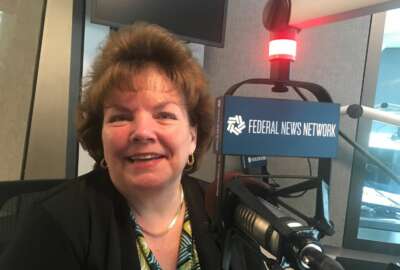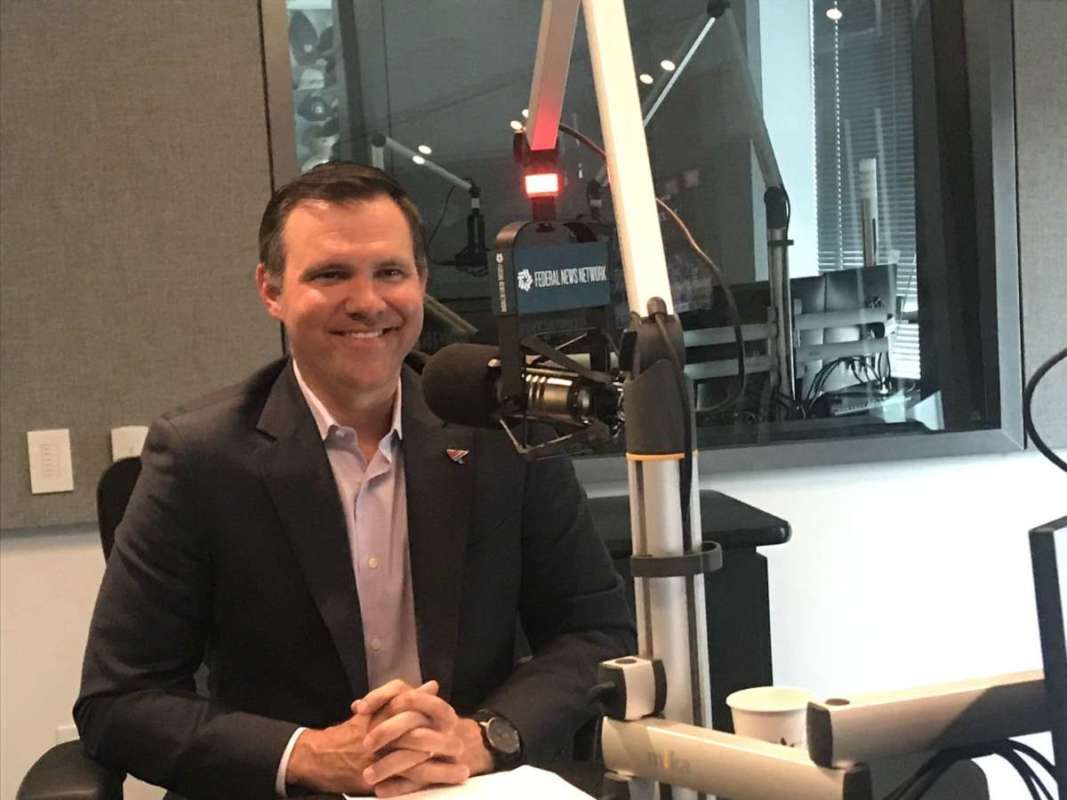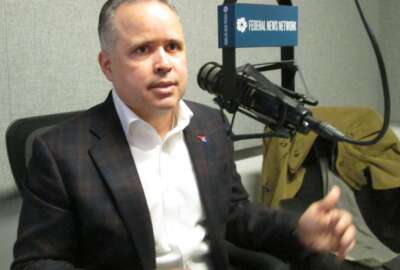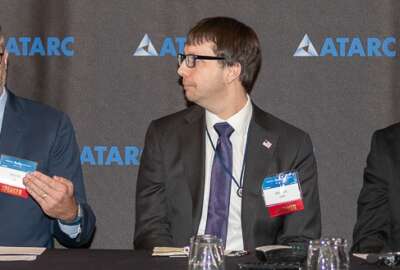
One contractor brings technology innovation through the ‘sticky note’ approach
Bryan Thomas, the senior vice president for public sector at World Wide Technology, said private sector use cases is helping agencies become more comfortable with...
Views from the Corner Office is a new show designed to talk to the private sector leaders that influence and impact the federal market. The goal of this monthly discussion is for federal executives, lawmakers and other industry experts to gain insights and a better understanding into the trends, the challenges and the evaluation of the technology, acquisition and leadership in the federal market by the executives who lead the federal practices of government contractors.

Bryan Thomas, the senior vice president for public sector at World Wide Technology, sat down with executive editor Jason Miller at Federal News Network’s studios in Chevy Chase, Maryland.
Here are some excerpts from that discussion.
State of the federal market
JM: Is it a good time to be a federal contractor?
BT: I’ve been in this space for about 19 years now, at World Wide Technology specifically, and I can’t tell you a better time to be a federal contractor or even in public sector. That complexity in the market, as it relates to technology and really the people to get toward successful outcomes for customers, is happening more today than maybe ever before.
Today more than ever, I think technology innovation has evolved into a place that the consumption of that is now available for the government more so than it has been before. A lot of these newer, bleeding technologies were not proven in the marketplace. So the commercial organizations and telecommunication companies have moved first to things like cloud and different transformational security outcomes, Internet of Things and other things. That has given the government a really good basis of understanding of what the art of possibility is. So today in the federal contract space, we have a great use case scenario in the market that allows us to move much faster than we had before.
The innovation game
JM: What are you seeing from the gamification or the ideation piece to really promote innovation in agencies?
BT: I think the biggest innovation is the culture shift. So if you think about your business practice every day, it shouldn’t take an application, a security workshop or a security objective to do gamification ideation. You should do it to determine how do you objectively move your business in the right direction? How do you think differently? How do you communicate? At the end of the day, potentially the smartest person in the room during a conference may not say anything because they’d been talked over for a long period of time. Ideation gives them our world in sticky notes, right? And they get to write their objectives down and then provide that data to the room. Then, that could be a really good idea that can apply to the next generation thought process. This whole idea around diversity inclusion and keeping everything and everybody at the top of mind, that’s the culture shift that companies need to go through. And I think the federal government does as well. There’s a lot of extremely smart people that have a great number of ideas. It’s how do we take those ideas and put them into workshop action groups to help customers.
JM: Is it happening and are agency’s going down this path? What are you seeing about this idea?
BT: Not very often. I think where it is happening, we are trying to drive acquisition requirements through the ideation process prior to requests for information actually coming out and so it can be an educated qualified customer. People talk about things like organizational conflicts of interest and how do you get around that? Well, the reality of the situation is, as long as we’re providing a two-way conversation and they’re capturing it, that information will get its way out into procurement. We’re not driving the specific requirements per agreement. We’re just getting the customer to think about what the requirements actually are. If you want to know the real challenge with federal acquisition, it’s defining requirements. So then industry can objectively really put a plan together to successfully implement those requirements. But gaining those requirements and making sure they end up in those RFPs are some of the ways that we’re seeing it. But again that culture shift has to happen internally. They need to do it even when vendors aren’t there. I don’t think it is happening, and I’m not sure I see a lot of sticky notes in the Pentagon these days.
Related Stories
What does agile really mean?
Related Stories
JM: What are you seeing when it comes to agile and dev/ops across the government?
BT: The reality is that the icing on the cake is the fact that they’re saying agile and they’re releasing the RFI, RFPs, other transaction agreements with agile as their goal. But the objective of what they’re measuring success is inside of a waterfall. So if the RFP or the proposal itself doesn’t allow for you to truly measure your success in an agile environment, then your start and stops will be based on the waterfall approach and that’s everything to the vendor because that’s how you’re measured. That’s how you get your contractor performance assessment ratings system (CPARS). That’s how you get your payment. So you will end up being back in a waterfall environment. And the thing also around this is the smartest agile approach and the smartest dev/ops engineers don’t necessarily sit in downtown Washington.
JM: What makes a contract or an approach agile or dev/ops versus waterfall?
BT: You never stop learning and you never stop working. You never stop because these applications are almost like living beings. We provide a mobile field kit, which is a sensor integration bus that detects bombs. We deployed it with the Department of Defense and alongside police and fire at major events across the United States like the World Series or the Super Bowl. The sensor integration bus was developed from an agile perspective 14 years ago. We continue to add new sensors. We continue to add new customers and new capabilities. We’ve now are looking at light, heat and water, and just new advancements of technology allow for us to advance our end state a view of what the capabilities are to give the right person the right information. That is agile because it is a living and breathing capabilities document that will not go away anytime soon. It’s like the applications you download on your phone, how many updates do you get on your Apple or whatever Android device that you have on those applications? They’re constantly iterating to make them better and protect security vulnerabilities.
In memory of my mom
JM: Tell me something about yourself that most people don’t know.
BT: One thing I’m very passionate about is I sit on the board of directors for ALS and June was advocacy week so I’ll be up on the Hill trying to fight for other people who are struggling with this just horrid disease. My mom had passed from ALS a number of years ago so it’s dear to my heart. I put on a gala once a year to promote education, understanding that really at the end of the day, it’s around the funding streams for individuals who have to be cared for and then the families that are taking care of these patients. I don’t spend a lot of time talking about it in an open environment because it can become emotional for me. But at the end of the day, it’s something that I feel I’d share with you because it is something unique.
Copyright © 2025 Federal News Network. All rights reserved. This website is not intended for users located within the European Economic Area.
Jason Miller is executive editor of Federal News Network and directs news coverage on the people, policy and programs of the federal government.
Follow @jmillerWFED





